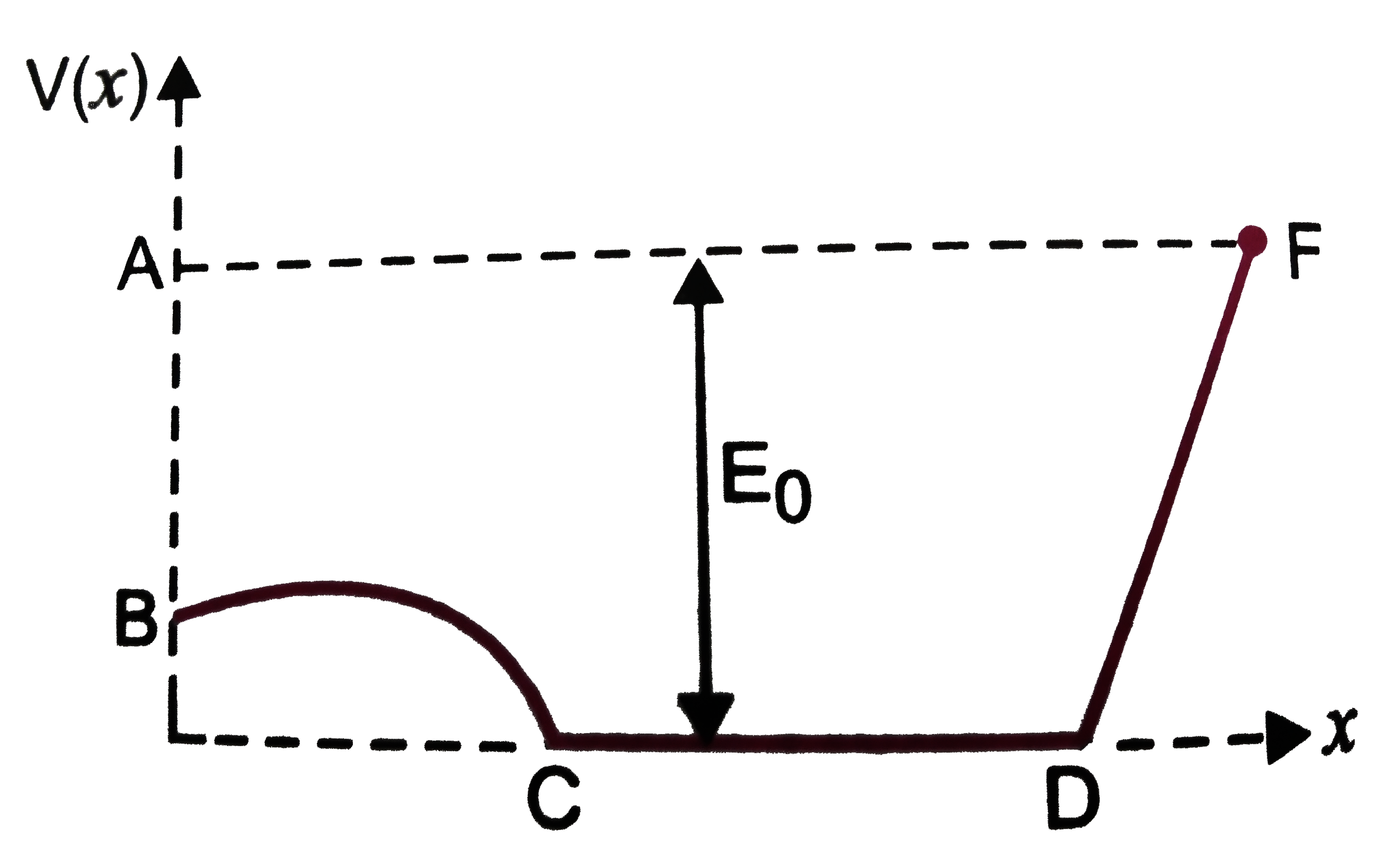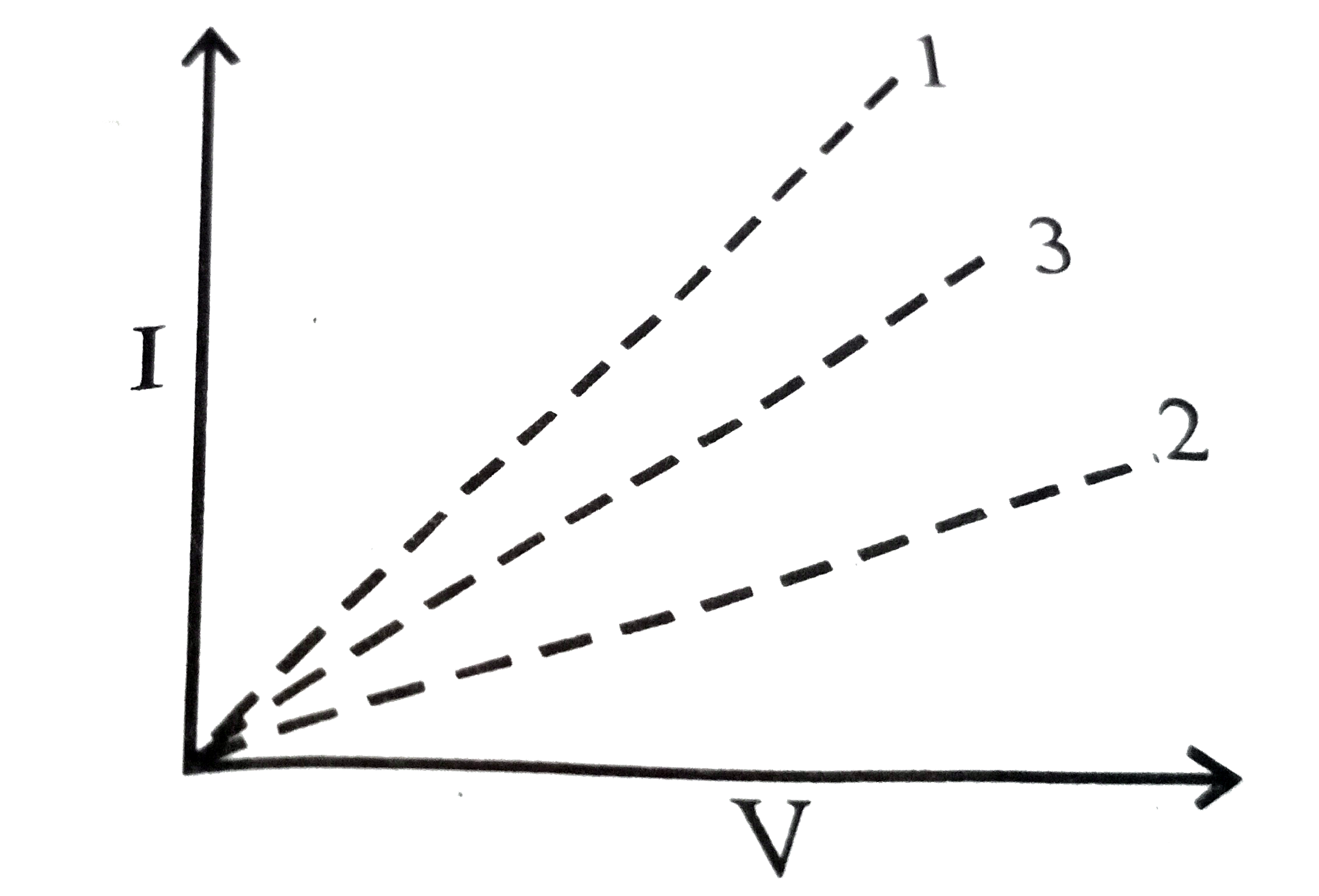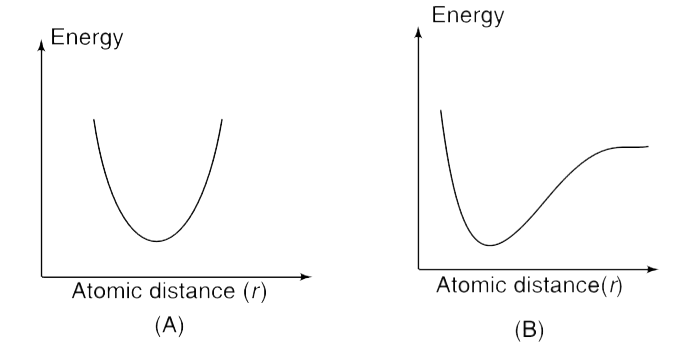Given below are three schematic graphs of potential energy V(r) versus distance r for three atomic particles : electron (e−), proton (p+) and neutron (n), in the presence of a nucleus at the origin O. The radius of the nucleus is r0. The scale on the V-axis may not be the same for all figures. The correct pairing of each graph with the corresponding atomic particle is -

(1,n),(2,p+),(3,e)
(1,p+),(2,e),(3,n)
(1,e),(2,p+),(3,n)
(1,p+),(2,n)(3,e)
The correct Answer is:A
Outside the nucleus electric potential decreases Since, electron is negativity changed.
∴ Its PE is −ve even outside the nucleus. Where Nucleus attractive force is negligible. (3)→e
Outside the nucleus neutron will not experience electric force as it is neutral. So, no PE associated with it outside nucleus (1)→ Neutron
Similar Questions
A graph of potential energy V(x) verses x is shown in figure. A particle of energy E0 is executing motion in it. Draw graph of velocity and kinetic energy versus x for one complete cycle AFA.

View SolutionFor a hydrogen -like particle, derive the expression : vn=(Ze2mrn)1/2 where vn is the velocity of the electron at distance rn from the nucleus, Z is the atomic number of the H-like particles, m and e are the charge and mass of the electron.
View Solution
Knowledge Check
In a hydrogen atom of radius rn, an electron is revolving in nth orbit with velocity vn. The magnetic field at nucleus of the atom will be
Aμ0evn2πr2nBμ0evn2π2r2nCμ0evn4πr2nDμ0evn4π2r2nIf at distance r from a positively charged particle, electric field strength and potential are E and V respectively, which of the following graph (s) is/are correct?
A B
B C
C D
D
Suppose the potential energy between electron and proton at a distance r is given by -(Ke^(2))/(3r^(2) .As per Bohr's quantization rule,the speed of electron in n th orbit of H-atom is
View SolutionThe magnitude of energy, the magnitude of linear momentum and orbital radius of an electron in a hydrogen atom corresponding to the quantum number n are E,P and r respectively. Then according to Bohr's theory of hydrogen atom:
View Solutiona particle moving in a circle track is given potential energy U=−kr where U is potential energy and r is radius. The correct graph between speed and radius of particles will be
View SolutionIf a charged particle is describing a circular path of radius r under the effect of perpendicular electric field, (i.e., motion of an electron around the nucleus of an atom) the force on the charged particle is……………..proportional to the …………..of radius of the circular path.
View SolutionThe graphs between current (1) and voltage (v) for three linear resistors 1,2 and 3 are given below:

If R1,R2 and R3 are the resistances of these resistors, then which one of the following is correct?
View SolutionIn the given figure graph B shows the variation of potential energy versus atomic separation (r) in a material. Argue qualitatively to show that if the potential energy graph was a symmetrical one as depicted in graph A, there would have been no thermal expansion on heatin

View Solution
